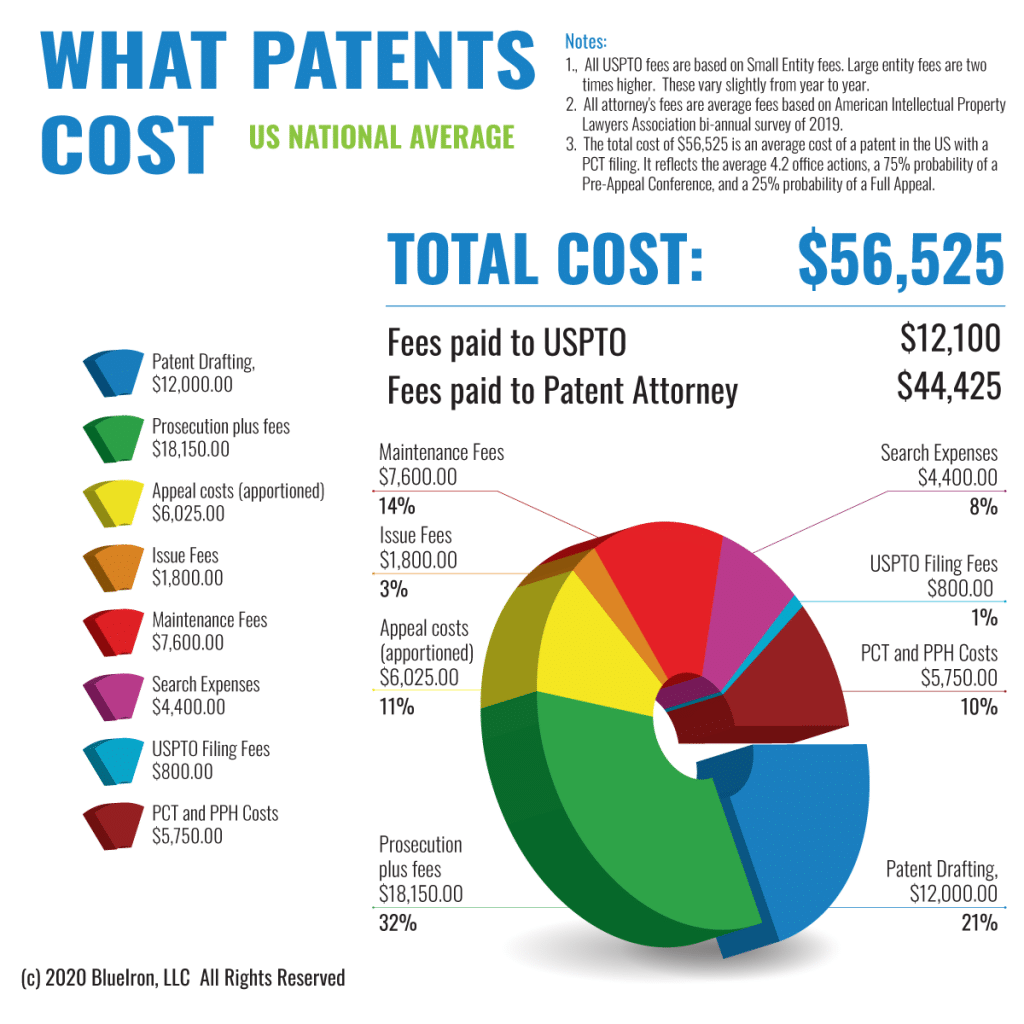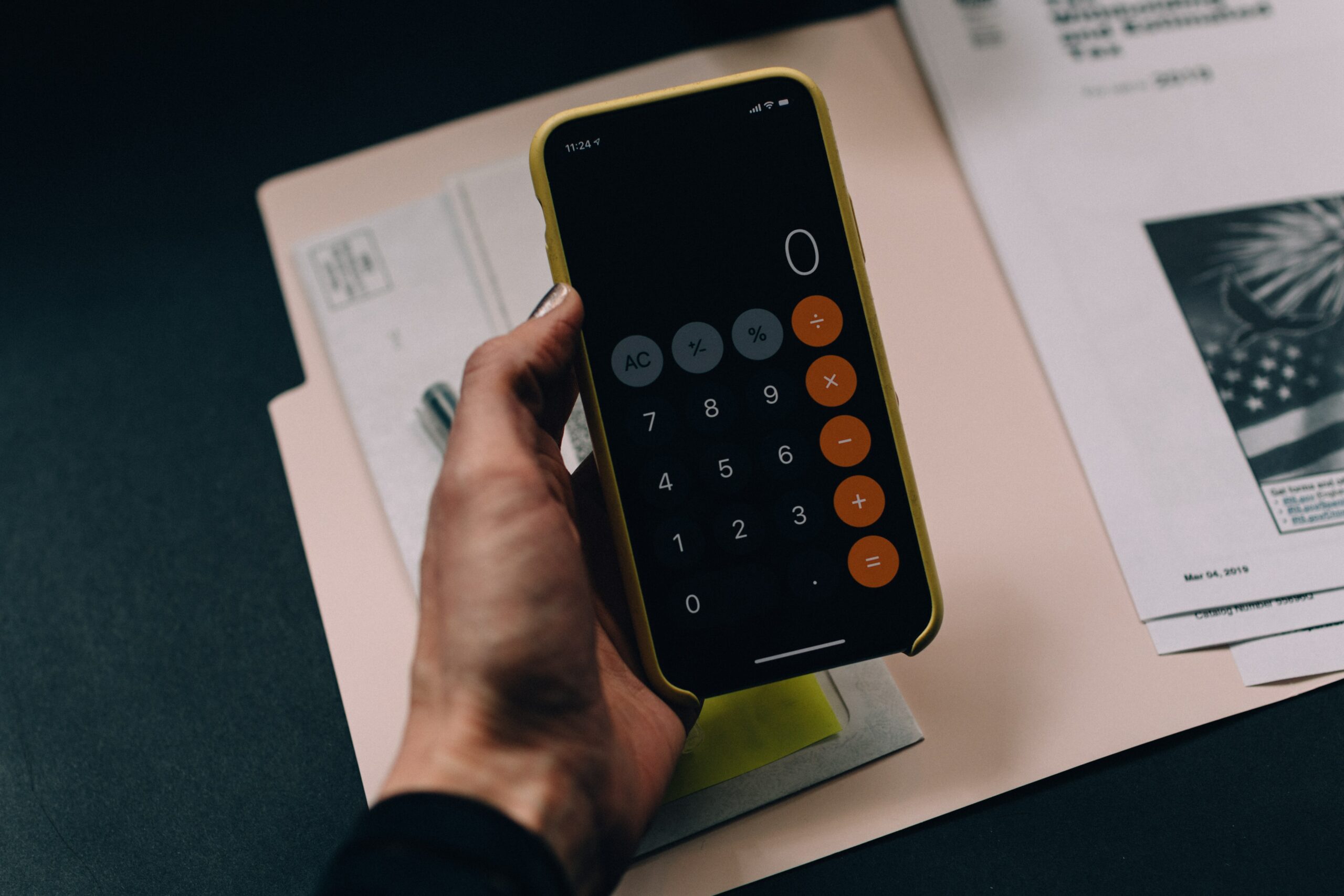Introduction
Patenting an invention is a crucial step for inventors and businesses aiming to safeguard their intellectual property. However, the cost of the patenting process can sometimes be a significant barrier, especially for individuals and startups with limited resources. The good news is that there are effective strategies and approaches to help reduce the financial burden associated with patenting. By understanding these cost-saving techniques and implementing them strategically, inventors can protect their innovations without draining their budgets.
The Cost of Patenting
The lifetime cost of each patent can be quite startling. According to BlueIron IP, the cost in 2019 is around $56,000 per patent.
There are many reasons why patenting can be costly. The complexity of the patent process is one reason. A thorough knowledge of patent laws and regulations is required to obtain a patent. It can be difficult for individuals to navigate this process alone. This can lead to them seeking the assistance of a patent attorney.
The time and effort required to conduct thorough patent searches and examine patent applications is another reason why patenting can be costly. A thorough search is required before a patent can ever be granted. This ensures that the invention is original and not already known. This search can be costly and time-consuming and may involve reviewing many patents.

The patent examination process can also be expensive and time-consuming. To ensure that the patent application meets all legal requirements and that the invention is new and not already known, the patent office will thoroughly examine it. The entire process of examining a patent application can take many years. It may need multiple rounds of revisions or resubmissions.
The cost of maintaining a patent is another factor that affects the overall cost of patenting. To keep a patent in force, it must be maintained with payment of maintenance fees.
The process of patenting can be complex and time-consuming. This can increase the overall cost. The cost of patenting may also include the cost to hire a patent attorney, conduct a search for patents, and pay maintenance fees.
How to reduce the cost of patenting with automation
Software can be used to lower the costs of patenting in many ways.
- Patent search software: A patent search software will help you to conduct a more efficient, cost-effective, and effective patent search. This software tool allows you to search through many patents and publications in order to find any prior art that might affect the patentability or validity of your invention.
- Electronic filing software: This software streamlines the process of filing a patent application with the USPTO. This software allows you to prepare and file your patent application electronically. It can be more efficient than paper filing and can also save you time and money.
- Software for legal research: This software allows you to quickly review and access relevant laws and regulations. It can also help you save time and money when doing your research.
- Collaboration and project management: Software that enables collaboration and project management can be used to help you manage the patenting process efficiently. It allows you to communicate with and collaborate with your patent attorney, as well as other members of your team from one location.
- Software to manage patent portfolios: This software helps you track deadlines, monitor patents’ status, and identify potential infringement risks.
You should remember that these software are only designed to help you save time and not to reduce your costs. To determine if the software can reduce patenting costs, it is important that you consult a patent attorney.
How can your company reduce patent costs?
There are many ways to lower the cost of patenting
- Do thorough patent research: Before you apply for a patent, make sure to conduct a thorough search. This will ensure that your invention truly is new and not already in use. This will help you avoid expensive and time-consuming legal problems later.
- Filing a provisional application for patent protection is less costly and more formal than non-provisional applications. A provisional patent application is a way to establish an early priority date for your invention. This can help you save money over the long term.
- You can file your application yourself. This will save you money on attorney fees. It is important to understand the patent laws and regulations as this process can be complicated and time-consuming.
- A fixed-fee patent attorney: This will help you to budget and manage your costs better.
- Prepare: Before you meet with a patent attorney, write a detailed description and any drawings or diagrams of your invention. This will help your attorney better understand your invention and reduce the cost of patenting.
- International patenting is a possibility: It can be costly to apply for patents in multiple nations. Instead, think about which countries are most important to your business and then focus on protecting your invention there.
- You can monitor your patent maintenance. Keep track of the dates and fees for your patent maintenance to avoid late payment penalties. This will ensure that your patent remains in force.
Remember that patenting is a complex process and takes a lot of time. So, it is not advisable to cut corners. Consult a patent attorney to determine if these suggestions will help to reduce the cost of patenting, without compromising the strength or effectiveness of your patent.

How provisional patent applications can lower costs
In a few cases, provisional patent applications can reduce the cost for patenting.
- Lower filing fee: Typically, filing a provisional application for patent protection costs less than filing a non-provisional application. This can save you money in the beginning.
- Provisional patent applications don’t require formal drawings. This can help to save money on the preparation and submission of drawings.
- Provisional patent applications don’t require claims. This can help to save money on the costs of drafting claims and submitting them.
- Set an early priority date: A provisional patent application can set an early priority for your invention. This is important if you decide to later file a non-provisional application for a patent. It can help you obtain a patent faster and more cost-effectively.
- You can test the market with provisional patent applications. This is a great way to see if there’s a market for your invention before you invest in a full patent application. The 12-month window can be used to gauge interest in your invention before you invest in a full-blown patent application.
Notably, a provisional application for a patent does not become an issued patent. It must be converted into non-provisional within 12 months from the date of its provisional filing. A provisional application must still meet all legal requirements for a non-provisional invention. It is therefore important to speak with a patent attorney in order to determine if a provisional application is appropriate for your invention and what it can do to reduce costs.
The proper way to do a provisional application
These steps are necessary to properly file a provisional application for a patent.
- Do thorough patent research: Before you file a provisional application for a patent, make sure that your invention is truly new and not already known. This will help you avoid expensive and time-consuming legal problems later.
- Preparing a detailed description of your invention. Your provisional patent application must include a description of your invention. This should include how it works, how it was made, and how it’s used. You should include any drawings or diagrams that can help explain the invention.
- You can file your provisional application for a patent with the United States Patent and Trademark Office. It is crucial to ensure your application meets all USPTO requirements.
- Include a cover page: Your provisional patent application should include a cover sheet. The cover sheet should include your name, contact information, and the title of your invention.
- Include a specification. A specification is a description of your invention. Include a description of your invention. This includes how it works, how it was made, and how it is used.
- Include any relevant drawings and diagrams: All relevant drawings and diagrams should be included with your provisional patent application. These drawings should be used to describe your invention and its various components.
- Pay the filing fee: Provisional patent applications are subject to a filing fee from the USPTO. This fee must be paid at the time you file.
- Keep a copy: You should keep a copy of your provisional patent application for future reference. Keep a record of when you filed your application as well as the USPTO number.

Notably, a provisional application for a patent does not become an issued patent. It must be converted into non-provisional within twelve months from the date of its provisional filing. A provisional application for a patent must still meet the legal requirements of a standard non-provisional application. It is therefore important to speak with a patent attorney in order to ensure that your application meets all applicable laws.
Conclusion
Navigating the patenting process can be a significant financial investment, but it doesn’t have to be prohibitively expensive. By employing cost-saving strategies and adopting a thoughtful approach, inventors and businesses can protect their inventions without draining their budgets. These strategies and approaches, inventors and businesses can significantly reduce the financial burden of patenting without compromising the protection of their intellectual property. Remember, cost reduction should not mean cutting corners or compromising the quality of your patent applications. Diligence, precision, and informed decision-making are key to successfully reducing patenting costs.

